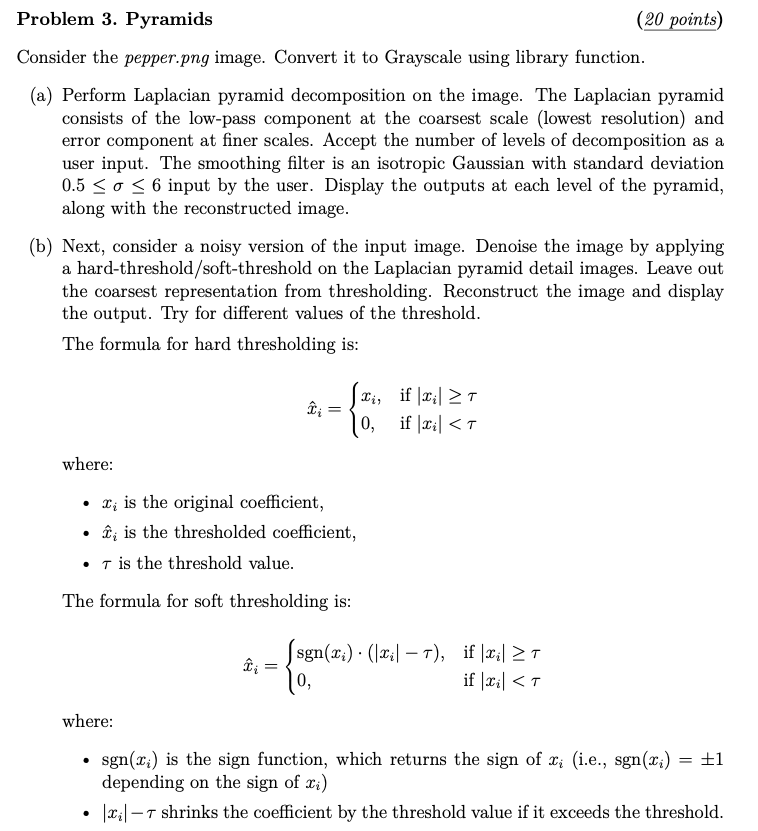(Solved): Problem 3. Pyramids (20 points) Consider the pepper.png image. Convert it to Grayscale using library ...
Problem 3. Pyramids (20 points) Consider the pepper.png image. Convert it to Grayscale using library function. (a) Perform Laplacian pyramid decomposition on the image. The Laplacian pyramid consists of the low-pass component at the coarsest scale (lowest resolution) and error component at finer scales. Accept the number of levels of decomposition as a user input. The smoothing filter is an isotropic Gaussian with standard deviation 0.5<=\sigma <=6 input by the user. Display the outputs at each level of the pyramid, along with the reconstructed image. (b) Next, consider a noisy version of the input image. Denoise the image by applying a hard-threshol(d)/(s)oft-threshold on the Laplacian pyramid detail images. Leave out the coarsest representation from thresholding. Reconstruct the image and display the output. Try for different values of the threshold. The formula for hard thresholding is: hat(x)_(i)={(x_(i), if |x_(i)|>=\tau ),(0, if |x_(i)|<\tau ):} where: x_(i) is the original coefficient, hat(x)_(i) is the thresholded coefficient, \tau is the threshold value. The formula for soft thresholding is: hat(x)_(i)={(sgn(x_(i))*(|x_(i)|-\tau ), if |x_(i)|>=\tau ),(0, if |x_(i)|<\tau ):} where: sgn(x_(i)) is the sign function, which returns the sign of x_(i)sgn(x_(i))=+-1 depending on the sign of x_(i) |x_(i)|-\tau shrinks the coefficient by the threshold value if it exceeds the threshold.
